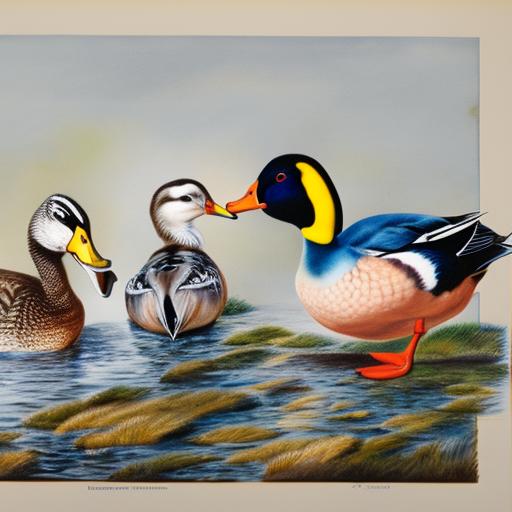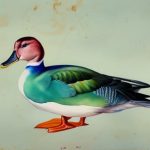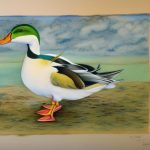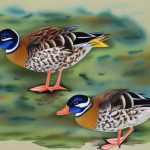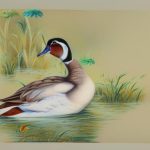British duck breeds are a diverse group of waterfowl that have been bred and raised in the United Kingdom for centuries. These ducks are known for their hardiness, adaptability, and excellent foraging abilities, making them popular choices for small-scale and backyard poultry keepers. British duck breeds come in a variety of sizes, colors, and plumage patterns, and they are valued for their meat, eggs, and down. In addition to their practical uses, British duck breeds are also appreciated for their beauty and unique personalities, making them a popular choice for hobbyists and enthusiasts. In this article, we will explore the history, characteristics, popular breeds, uses, and conservation efforts of British duck breeds, shedding light on the rich heritage and importance of these waterfowl in the United Kingdom.
Key Takeaways
- British duck breeds have a rich history and are known for their unique characteristics and physical attributes.
- The origins of British duck breeds can be traced back to ancient times, with a strong influence from wild ducks and selective breeding.
- British duck breeds are known for their adaptability, hardiness, and excellent foraging abilities.
- Some popular British duck breeds include the Aylesbury, Call Duck, and Cayuga, each with its own distinct characteristics and uses.
- Conservation and preservation efforts are crucial for maintaining the genetic diversity and heritage of British duck breeds for future generations.
History and Origins of British Duck Breeds
The history of British duck breeds dates back to ancient times when domestic ducks were first introduced to the British Isles by the Romans. Over the centuries, these ducks were selectively bred by farmers and poultry keepers to develop traits that were well-suited to the local climate and environment. The resulting breeds were well-adapted to the wetlands, marshes, and waterways of the United Kingdom, making them valuable assets for agricultural and subsistence purposes. Some of the oldest British duck breeds include the Aylesbury, the Orpington, and the Rouen, which have been bred for their meat and egg production. These breeds have played an important role in the culinary traditions of the United Kingdom, providing a reliable source of protein and sustenance for generations.
Characteristics and Physical Attributes of British Duck Breeds
British duck breeds are known for their diverse range of physical attributes and characteristics. They come in various sizes, ranging from small bantam breeds to larger, meatier varieties. Their plumage can be found in an array of colors and patterns, including white, black, brown, and mottled. Many British duck breeds have distinctive markings on their bills, legs, and feet, adding to their visual appeal. In terms of temperament, British duck breeds are generally docile and friendly, making them suitable for both small-scale farming and as pets. They are also known for their excellent foraging abilities and adaptability to different environments, making them well-suited to free-range and pasture-based systems. Additionally, British duck breeds are valued for their high-quality meat, flavorful eggs, and down feathers, which have been used for insulation and bedding material.
Popular British Duck Breeds
There are several popular British duck breeds that have gained recognition for their unique qualities and contributions to the poultry industry. The Aylesbury duck is one of the most well-known British duck breeds, prized for its pure white plumage and succulent meat. The Orpington duck is another popular breed, valued for its dual-purpose nature as a meat and egg producer. The Khaki Campbell is a prolific egg layer, known for its ability to produce a large number of eggs throughout the year. The Indian Runner is a distinctive breed with an upright posture and excellent foraging abilities. The Cayuga duck is prized for its iridescent green-black plumage and flavorful meat. These are just a few examples of the diverse range of British duck breeds that have captured the interest of poultry enthusiasts and small-scale farmers alike.
Uses and Purposes of British Duck Breeds
British duck breeds serve a variety of practical purposes in addition to their aesthetic appeal. They are valued for their meat production, providing a flavorful and succulent source of protein for culinary purposes. Their eggs are also highly prized for their rich flavor and nutritional value, making them a popular choice for baking and cooking. In addition to their meat and egg production, British duck breeds are also valued for their down feathers, which are used for insulation and bedding material. Their adaptability to different environments makes them well-suited to free-range and pasture-based systems, where they can forage for insects, plants, and other natural food sources. Furthermore, British duck breeds are also kept as pets and ornamental birds due to their unique personalities and attractive plumage.
Conservation and Preservation Efforts for British Duck Breeds
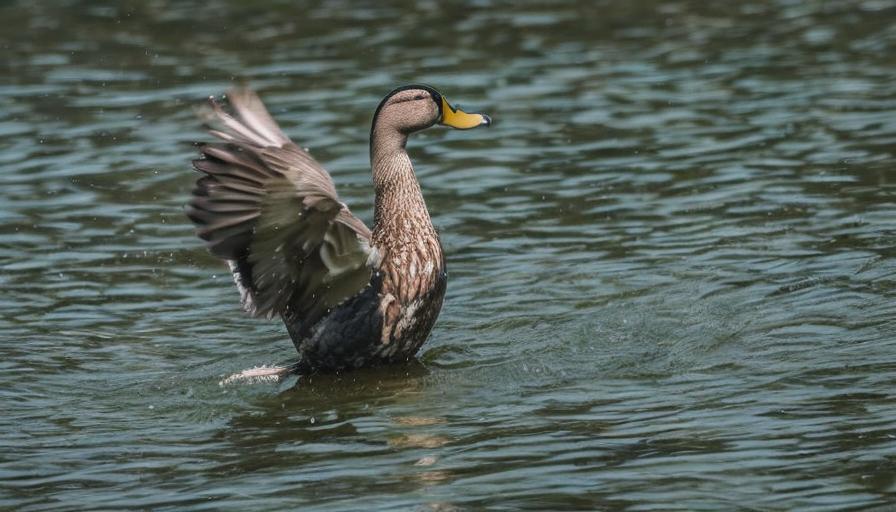
In recent years, there has been a growing interest in the conservation and preservation of traditional British duck breeds. As industrial agriculture has become more dominant, there has been a decline in the genetic diversity of poultry breeds, including ducks. This has led to concerns about the loss of valuable traits and characteristics that are unique to British duck breeds. To address this issue, various organizations and breeders have been working to raise awareness about the importance of preserving these heritage breeds. Efforts have been made to establish conservation programs, breed registries, and breeding standards to ensure the continued existence of these ducks. Additionally, there has been a resurgence of interest in small-scale and sustainable farming practices, which has led to a renewed appreciation for traditional British duck breeds.
Conclusion and Future of British Duck Breeds
In conclusion, British duck breeds have a rich heritage and play an important role in the agricultural and cultural landscape of the United Kingdom. Their diverse range of physical attributes, practical uses, and unique personalities make them valuable assets for small-scale farmers, poultry enthusiasts, and conservationists. As interest in sustainable farming practices continues to grow, there is hope for the future preservation and promotion of traditional British duck breeds. By raising awareness about their importance and supporting conservation efforts, we can ensure that these waterfowl continue to thrive for generations to come. Whether it’s for their delicious meat, flavorful eggs, or charming presence on the farm, British duck breeds hold a special place in the hearts of those who appreciate their beauty and utility.
If you’re interested in learning more about British duck breeds, you might also want to check out an article on Poultry Wizard about the best heater for a chicken coop. It’s important to ensure that your ducks are kept warm and comfortable, especially during the colder months. You can find the article here.
FAQs
What are some popular British duck breeds?
Some popular British duck breeds include the Aylesbury, the Call Duck, the Cayuga, the Indian Runner, the Khaki Campbell, and the Orpington.
What are the characteristics of British duck breeds?
British duck breeds are known for their hardiness, adaptability, and good egg-laying abilities. They come in a variety of colors and patterns, and are often raised for both meat and eggs.
What is the Aylesbury duck known for?
The Aylesbury duck is known for its pure white plumage, pink bill, and large size. It is a popular choice for meat production and has a calm and friendly temperament.
What is the Call Duck known for?
The Call Duck is known for its small size, cute appearance, and distinctive “call” or “whistle” sound. It is often kept as a pet or for exhibition purposes.
What is the Cayuga duck known for?
The Cayuga duck is known for its iridescent green-black plumage, which appears almost black in certain lighting. It is a good forager and is often raised for meat and eggs.
What is the Indian Runner duck known for?
The Indian Runner duck is known for its upright posture and distinctive “runner” or “penguin” stance. It is a prolific egg layer and is often kept for both eggs and exhibition purposes.
What is the Khaki Campbell duck known for?
The Khaki Campbell duck is known for its khaki-colored plumage and excellent egg-laying abilities. It is a popular choice for small-scale egg production.
What is the Orpington duck known for?
The Orpington duck is known for its gentle nature, good meat quality, and attractive buff-colored plumage. It is a dual-purpose breed, suitable for both meat and egg production.
Meet Walter, the feathered-friend fanatic of Florida! Nestled in the sunshine state, Walter struts through life with his feathered companions, clucking his way to happiness. With a coop that’s fancier than a five-star hotel, he’s the Don Juan of the chicken world. When he’s not teaching his hens to do the cha-cha, you’ll find him in a heated debate with his prized rooster, Sir Clucks-a-Lot. Walter’s poultry passion is no yolk; he’s the sunny-side-up guy you never knew you needed in your flock of friends!

